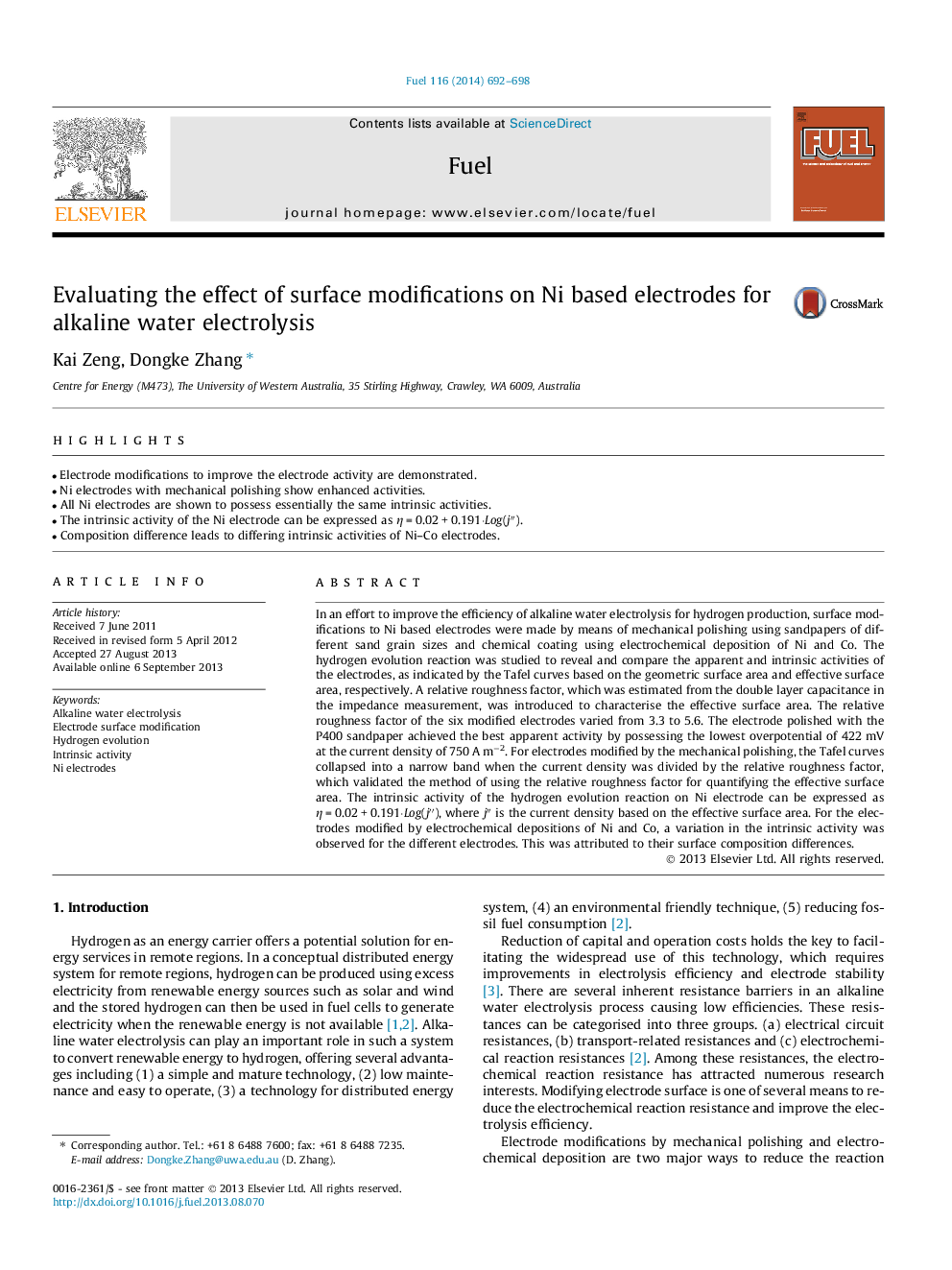| Article ID | Journal | Published Year | Pages | File Type |
|---|---|---|---|---|
| 6639004 | Fuel | 2014 | 7 Pages |
Abstract
In an effort to improve the efficiency of alkaline water electrolysis for hydrogen production, surface modifications to Ni based electrodes were made by means of mechanical polishing using sandpapers of different sand grain sizes and chemical coating using electrochemical deposition of Ni and Co. The hydrogen evolution reaction was studied to reveal and compare the apparent and intrinsic activities of the electrodes, as indicated by the Tafel curves based on the geometric surface area and effective surface area, respectively. A relative roughness factor, which was estimated from the double layer capacitance in the impedance measurement, was introduced to characterise the effective surface area. The relative roughness factor of the six modified electrodes varied from 3.3 to 5.6. The electrode polished with the P400 sandpaper achieved the best apparent activity by possessing the lowest overpotential of 422 mV at the current density of 750 A mâ2. For electrodes modified by the mechanical polishing, the Tafel curves collapsed into a narrow band when the current density was divided by the relative roughness factor, which validated the method of using the relative roughness factor for quantifying the effective surface area. The intrinsic activity of the hydrogen evolution reaction on Ni electrode can be expressed as η = 0.02 + 0.191·Log(jâ³), where jâ³ is the current density based on the effective surface area. For the electrodes modified by electrochemical depositions of Ni and Co, a variation in the intrinsic activity was observed for the different electrodes. This was attributed to their surface composition differences.
Keywords
Related Topics
Physical Sciences and Engineering
Chemical Engineering
Chemical Engineering (General)
Authors
Kai Zeng, Dongke Zhang,
